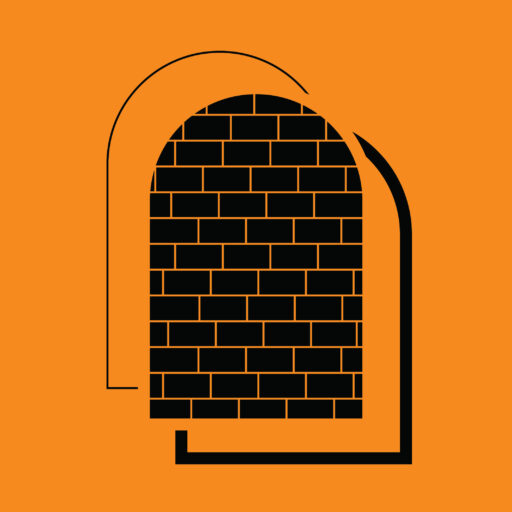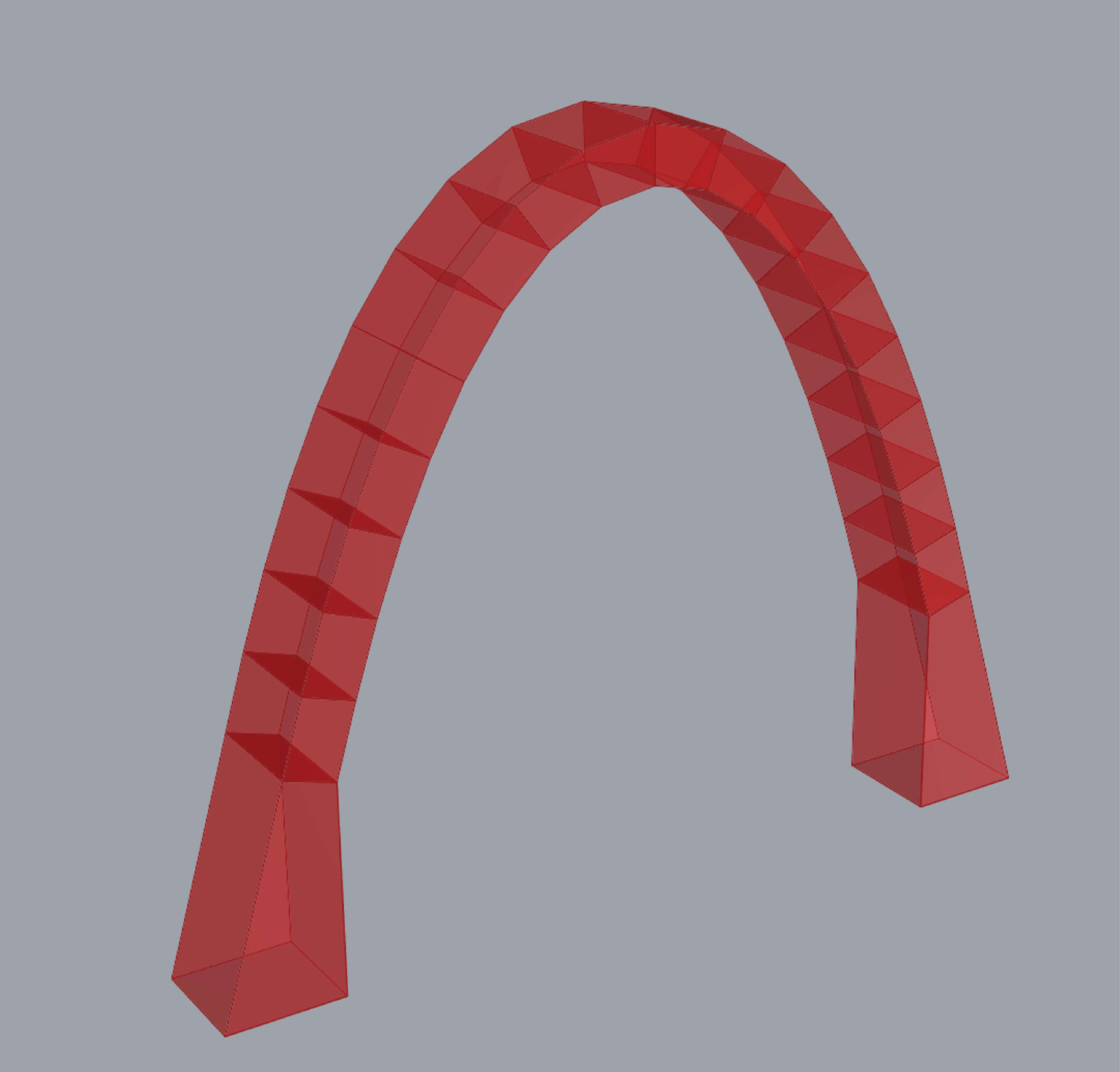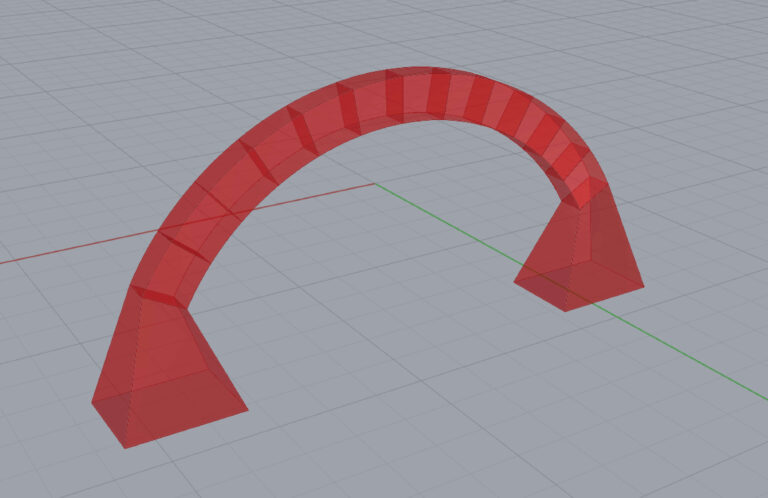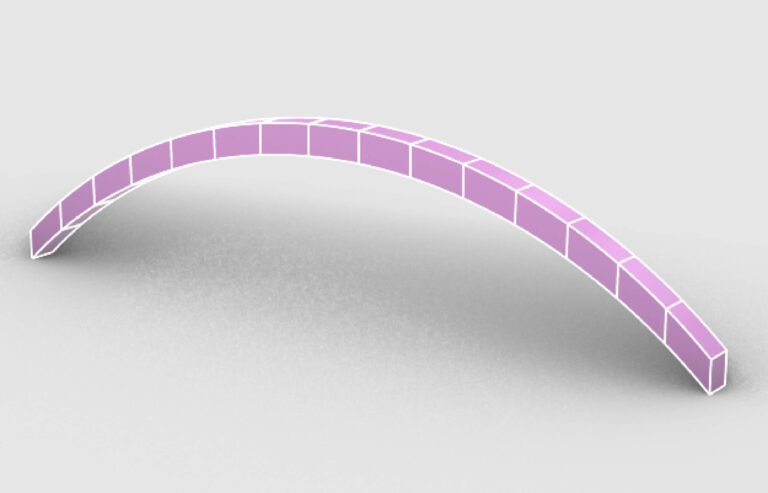Hello!
In our previous work, we had designed the ”voussoirs” and ”springers”. At the beginning of this week, we simplified the sloped geometry of the intrados and extrados surfaces of the ”voussoirs” by connecting the output of the ”Divide Curve” component to the ”Polyline” component, which made them more planar. Later, with the support of my instructor, we reviewed and refined the component relationships I had previously created to make the definition more streamlined and usable. You can follow what we aimed to achieve with each component and its function through the notes placed on the visuals below.
”Springers” play a key role in transferring the load of the arch to the ground and completing the overall load distribution system. Therefore, the extrados surface of the ”springer” must follow the slope of the extrados surface of the last ”voussoir” block.
To generate the ”springers”, I first selected the initial and final ”voussoir” blocks using the ”List Item” component. Then, in order to obtain the points of the surface where these blocks connect with the ”springer”, I decomposed the blocks into their surfaces using the ”Deconstruct Brep” component. I then used another ”List Item” component to isolate the specific surface I was referring to. After that, I applied the ”Deconstruct Brep” component again on those surfaces to extract the required points.
Among these points, I projected the one on the intrados surface vertically (at a 90-degree angle) onto the XY plane using the ”Project Point” component. For the other point needed to form the ”springer’s” surface, I calculated the tangent (slope) of the curve located on the extrados surface of the last ”voussoir” block using the ”Evaluate Curve” component, and projected that point onto the XY plane using the ”Project Point” component in line with the slope direction.
At this point, I had both the corner points of the block and the points projected onto the XY plane. I connected these points using the ”Line” component, then combined the resulting lines using the ”Join Curves” component, and finally created a surface for the ”springer” using the ”Boundary Surfaces” component. I then duplicated this surface using the ”Move” component. An important detail here is that the ”Motion” input of the ”Move” component should be connected to the initial thickness value of the ”voussoirs”. This ensures that when the thickness of the ”voussoirs” changes, the thickness of the ”springers” updates proportionally.
A ”springer” consists of 6 surfaces. Up to this point, including the face adjoining the final ”voussoir” block, we have created 3 of them. To generate the remaining surfaces, we extract the edges of the original and duplicated surfaces created with the ”Boundary Surfaces” component using the ”Brep Edges” component. Then, by lofting these edges, we obtain the remaining three surfaces. Of course, in order to perform a smooth loft, do not forget to check your loft settings and use the ”Merge” component where necessary.
Finally, we connect all the created surfaces in the correct sequence using the ”Merge” component and join them into a solid using the ”Brep Join” component. After repeating this process for the other ”springer”, we will have successfully created our fully parametric arch structure, including the ”voussoirs” and ”springers”.



